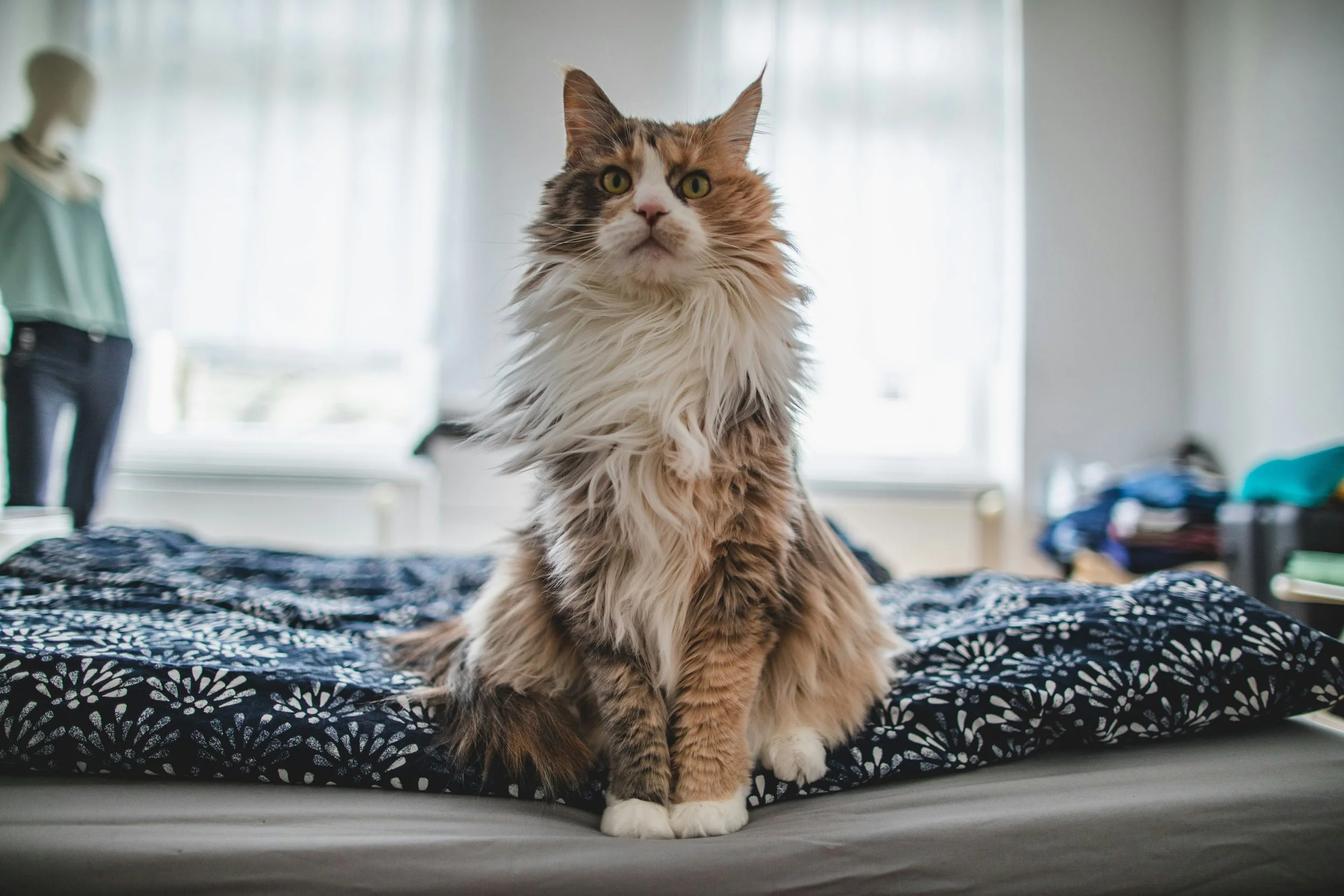How to Prepare Your Home for a Senior Cat
As cats enter their golden years, they become susceptible to conditions affecting their vision, hearing, cognition and agility. Incorporating a few easy adjustments into your household will ensure a comfortable, safe and accessible environment for a senior feline. Consider these tips below and discuss them with your veterinarian before you welcome a senior cat into your household.
Carpet-Covered Cat Steps
Senior cats, like young cats, still enjoy perching on a high spot to oversee their surroundings. Conditions such as arthritis can make climbing and leaping more difficult for them. Consider purchasing carpet-covered cat steps or ramps so your feline can safely get to their favourite spot.
Leave Furniture in Place
With the senses often declining in cats at this phase in their life, leaving your furniture in the same place and ensuring pathways are clear will create a safer environment. Cats with vision impairments can navigate a house well when they are used to the same traffic patterns.
Night Lights
Consider adding night lights to the rooms and hallways in your house. This will assist navigation for cats with limited vision during the darker hours.
Extra Padding and a Heat Source
Discomfort becomes a common experience for older felines; aching joints and less muscle mass contribute to this. Add extra padding to your cat’s favourite resting spots such as an orthopedic cat bed. You can also consider adding a heating pad designed specifically for pets.
Raised Food and Water Bowls
Raised food and water bowls will increase comfort for your senior cat during mealtimes. Arthritis in older felines can affect the neck, elbows and hips. A raised bowl will ensure your cat can stand or sit while eating instead of crouch.
Hydration Stations
Certain health conditions can increase thirst in your senior cat. Consider putting more water bowls around your house or purchasing a pet-safe water fountain. Cats also love running water!
Accessible Litter Box
Conditions such as arthritis, kidney disease and cognitive dysfunction can lead to your cat urinating and defecating outside of their litter box. Ensure your litter box has low walls so your cat can enter and exit it more easily. If your house has more than one level, place a litter box on every floor.
Calm and Quiet Spots
Cats use their sight, hearing and sense of smell to determine if an environment is safe. As the senses dull with age, loud and social homes can cause anxiety in your cat. If you live in a rambunctious home, create a quiet spot in places like a bedroom or a closet.
Baby Gates
With conditions such as limited visibility and an aging body more susceptible to injury, block off stairs or other potentially dangerous areas from your cat by installing a baby gate.
Your senior cat can enjoy a safe, happy and healthy life in an environment tailored to their needs. Start by consulting your veterinarian about your cat’s specific requirements, then develop a plan to transform your space into a senior feline-friendly home!
Ready to welcome a senior cat into your home? Discover how Purrfect Seniors assists senior cats and their new adopters!
Note: This blog provides a summary of tips and ideas to make your home senior cat-friendly. Each cat is unique and will have different needs as they age. Visit PetMD to learn more about creating a safe and accessible environment for your senior cat. Always consult your veterinarian for personalized advice to ensure your cat remains healthy and comfortable.



